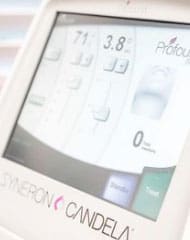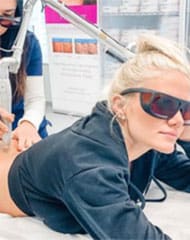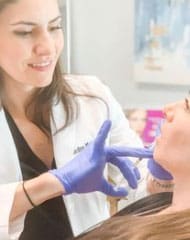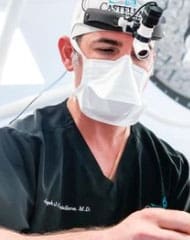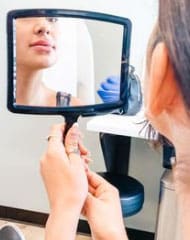 Men and women choose to get cosmetic surgery to improve their appearance in some way. Yet, the scarring left behind may cause some people to feel self-conscious of their new look — at least until the scars fade.
Men and women choose to get cosmetic surgery to improve their appearance in some way. Yet, the scarring left behind may cause some people to feel self-conscious of their new look — at least until the scars fade.
Luckily, there are ways to minimize the appearance of scars, or even render them nearly invisible. One way is to choose an incision type that will help to hide the resulting scar. For breast augmentation, one of the best techniques for this is the periareolar incision.
An Invisible Scar?
Periareolar incision scarring isn’t invisible, but it is masked by the natural features of the areola.
While your scar won’t actually be invisible, it will be hidden, which is pretty much the same thing.
This incision is made in a semi-circle around the lower half of the areola. The naturally bumpy texture and different skin tone here allows the scar to blend into the areola’s edge. Even during the early days of healing, when the scar may be brighter in color than the areola itself, it is always hidden when dressed, unlike other scars that might show in certain tops or swimsuits.
Periareolar Incision Pros and Cons
When planning your breast enhancement, you need to know the benefits and risks of each decision you make. The biggest benefit of the periareolar incision is that it allows the scar to be hidden. This incision type also makes placing implants easier and more accurate since they sit right behind the areola.
There are drawbacks, though. First, the periareolar incision might cause difficulty with breastfeeding, so women who plan to have children might decide to wait. Secondly, there are conflicting reports on whether or not this incision method can alter nipple sensation. Finally, women with smaller areolae who want silicone implants, which are filled prior to placement, may not be candidates for this incision.
Which type of incision is right for your breast augmentation? Schedule your consultation with Dr. Castellano to find out. Call us at 813-872-6093 or head over to our contact page.
Related Posts


